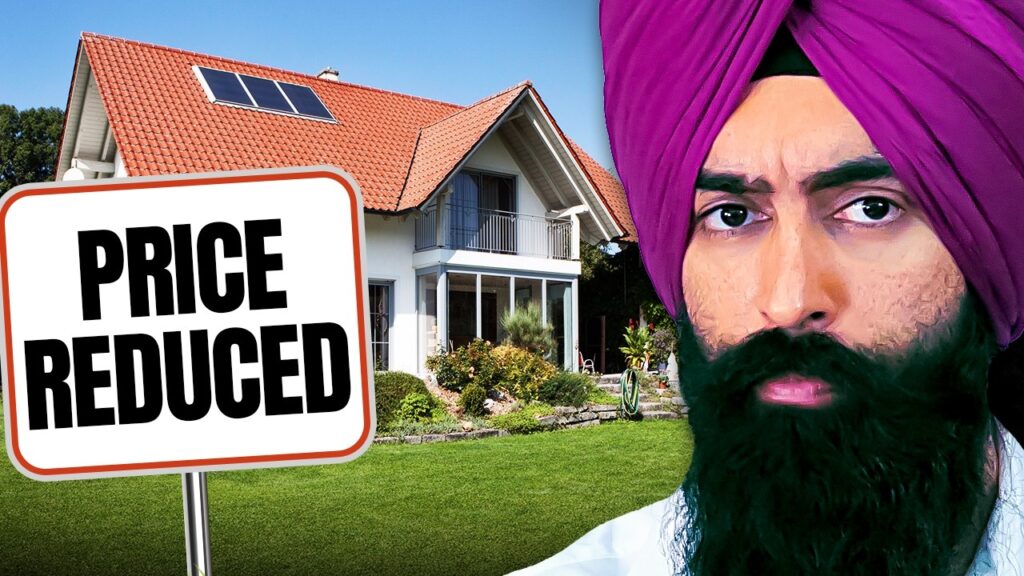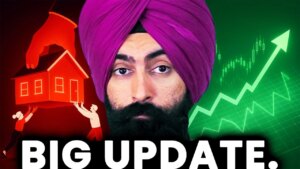Why Housing Feels So Unaffordable and What Lower Interest Rates Could Change

The U.S. housing market has gone through an extreme rollercoaster ride between 2020 and 2025. When mortgage rates dropped to historic lows of around 3% during the early pandemic years, home sales exploded. Fueled by free money policies and cheap borrowing, people rushed to buy. As a result, home prices skyrocketed. A house that cost $400,000 in 2020 now demands $600,000 in 2025. But it’s not just the sticker price that’s changed. With mortgage rates now around 7%, the monthly mortgage payment on that same home jumped from $1,420 to a staggering $3,190. That’s more than double and it’s pricing many buyers out of the market. Despite the slowdown in demand, sellers haven’t dropped their prices much. Instead, we’re in a stalemate: sellers holding out for top dollar, while buyers struggle with affordability. Add in rising property taxes and higher home insurance costs, and it’s no wonder so many people are sitting on the sidelines.
In 2022, the Federal Reserve raised interest rates 11 times to battle inflation. That move cooled the real estate frenzy but slowed the entire market down. Now, there’s talk of a change. President Trump has been vocal about lowering interest rates to revive the housing sector. If rates drop in 2025 or 2026, we could see a significant shift. Lower mortgage rates make monthly payments more affordable, which could pull buyers back into the market. For sellers, lower rates mean moving becomes less financially painful. If you’re holding a 3% mortgage, upgrading to a bigger home at a 7% rate feels punishing. But if that new rate falls to 4.5% or 5%, more people might be willing to move, freeing up inventory and reducing the gridlock. And with the potential replacement of Federal Reserve Chair Jerome Powell in 2026, more aggressive rate cuts may be on the table. That alone could ripple through the housing market and the broader economy.
Housing prices tend to go up faster than they fall. Sellers resist lowering their prices even when there are fewer buyers. But when competition heats up, buyers are quick to overbid. That’s why home values rarely correct quickly. In 2025, we’re seeing some signs of softening more listings are hitting the market, and sellers are slowly adjusting expectations. But demand remains the wildcard. If interest rates fall and demand increases, we could find a better balance. New construction can help with supply issues, but whether it leads to affordability depends on where prices and mortgage rates land.
This market stagnation has real economic consequences. Realtors, mortgage brokers, and title companies earn their income from transactions. When deals stop, so do their paychecks. If mortgage rates fall, we could see a resurgence in refinancing and buying activity. That’s good news for those working in the real estate industry and anyone looking to make a move. Housing isn’t just about where people live it’s a key economic driver. Entire sectors from home improvement to furniture sales depend on a vibrant housing market.
But there’s a looming challenge behind the scenes: U.S. government debt. We’re now spending nearly $1 trillion every year just on interest payments. As deficits grow, the government has to sell more debt to cover the gap. That increases long-term economic pressure. If rates are lowered to stimulate housing and the broader economy, it could relieve some short-term pain. But without fiscal reform, we risk falling into a debt spiral that limits future economic flexibility.
The bottom line? The housing market is stuck in limbo. Buyers can’t afford homes, and sellers won’t budge on price. Lower interest rates could unfreeze the market, making homeownership more attainable and bringing much-needed activity back to the real estate sector. But deeper economic challenges still loom and how we handle interest rates, debt, and housing supply over the next few years will shape the financial well-being of millions of Americans.
Jaspreet Singh is not a licensed financial advisor. He is a licensed attorney, but he is not providing you with legal advice in this article. This article, the topics discussed, and ideas presented are Jaspreet’s opinions and presented for entertainment purposes only. The information presented should not be construed as financial or legal advice. Always do your own due diligence.






